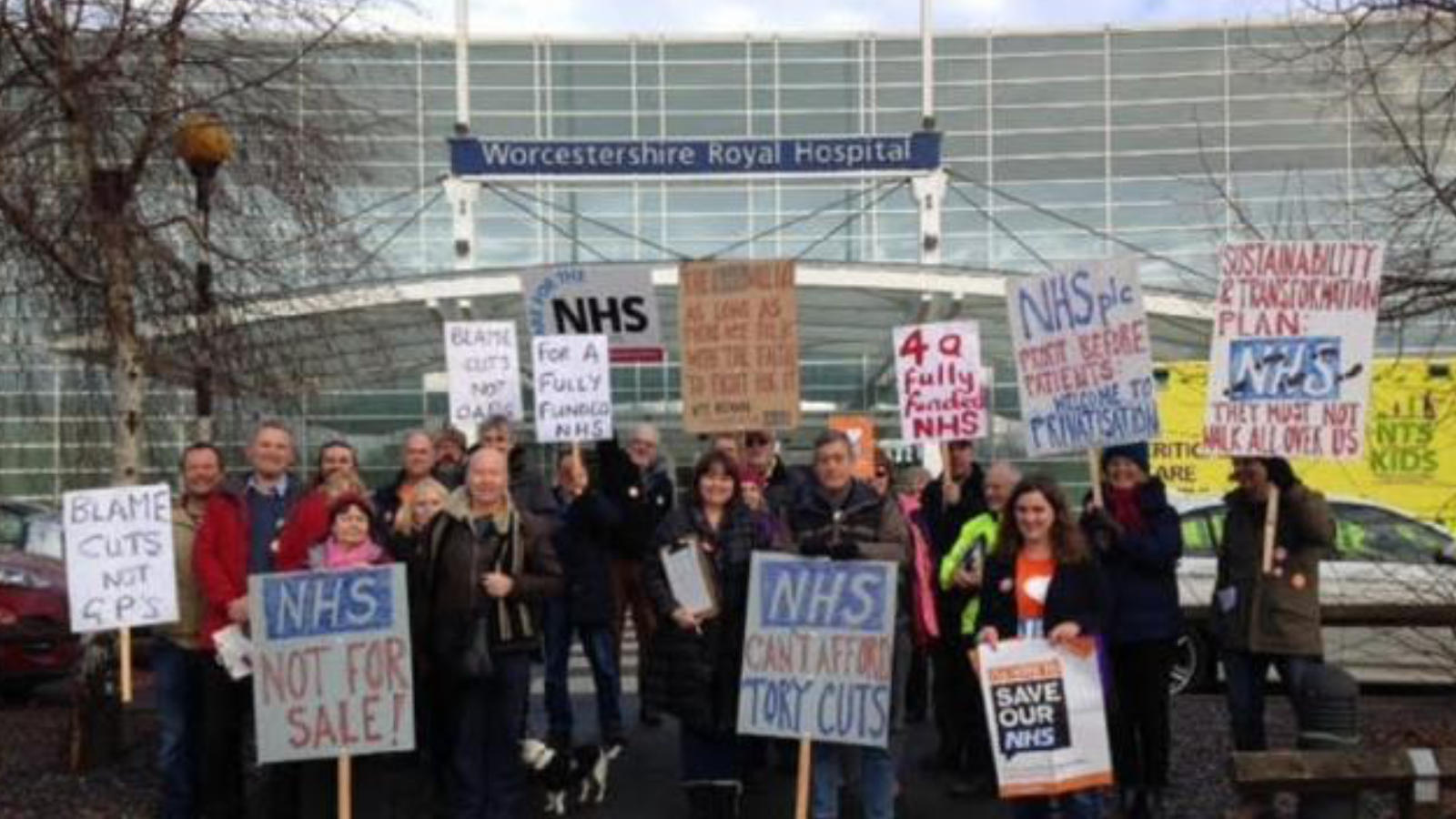Learning
How to get community organising to scale
How a small team from Worcester won millions for the NHS - with an organising strategy and some basic tech.
Georgie Laming | 19 Nov 2018

What makes community organising so effective, like developing a one-on-one relationship with someone, is often seen as unachievable at scale. Over a small geography, organising can bring the goods, but how can we replicate that work with the masses? Is it even possible?
Working for the National Union of Students, Save the Children and 38 Degrees, I've felt the pressure of getting all of our members involved. I believe you can achieve at scale because I have been part of the work that has done it. Here are my reflections based on an NHS campaign I organised.
Stop corridor deaths in Worcester.
January 2017 national news covered the tragic news that 3 patients had died at Worcester Hospital whilst waiting in their corridors for beds. Overcrowding and lack of staff were causing huge, unnecessary queues in A&E.
It was a Sunday, and I was tasked with organising the on-the-ground response to the news whilst other 38 Degrees staff launched the digital and national campaign.
For two weeks, we held street stalls. We bagged ourselves local news coverage and eventually, local MPs, Healthwatch activists, and patients called for more funding and an official investigation into the tragedy.

The campaign became a blueprint for more and more NHS campaigning, bringing 38 Degrees members together, getting local Conservative MPs to admit the NHS was struggling and it culminated in Theresa May committing millions in extra funding to the NHS
My Three biggest lessons
1. Dont Be Precious
When you first learn about community organising as a concept, it is often taught as the silver bullet to answer all societys woes. Real people taking action in real life. No doubt youll pour over the writing of Saul Alinsky and download the lectures of Arnie Graf and become absolutely convinced the only way to make change in the world is to sit down with every single supporter for a half hour face to face conversation.
In reality, Alinskys model of organising doesnt age well. If you want to make organising work at scale in 2018 you need to be willing to tear up the rule book.
The Worcester campaign was urgent and there wasnt time to be precious. My instincts were to find someone who was deeply affected by the tragedy, who could bring an incredible testimony to the campaign.
I realised pretty quickly that we had a small window of opportunity to turn this case from a one day headline to a campaign.
So I downloaded a list of all the nearest supporters to the hospital, grabbed my phone and on the first phone call, I found my campaigner. His name was John; he had been driving when I called and pulled in at a service station to talk.
John was new to the area, having used the NHS a lot recently and had heard the news on the radio that morning. He was pretty shaken that something like this happened in his new town. When I asked him if he would help lead the campaign, he didn’t pause. He just said yes. The best part? I’d been ringing to call his wife. He had borrowed her phone in case he needed it on the trip. I likely would have moved on to the call if he hadn’t taken it.
With John, things fell into place. By Monday morning, we were ringing up more volunteers, asking them to join the campaign, write to their MP and help us plan activities. Within a couple of days, John had turned out 25 people to a campaign meeting, running a giant stunt outside the hospital. We also supported volunteers in four other constituencies served by the hospital to put pressure on their MP.
At a time of urgency, working with who is available and willing, rather than trying to find the perfect person, we were able to run a reactive campaign.
2. Use Digital Tools
My laptop and phone are the most essential items in my organiser arsenal. Wherever I am, I need to be in constant contact with volunteers. But you can use many other tools to up your game. Here are a few of the tools we used on the Worcester campaign.
For admin, we turned to Trello. It’s a tool where you can create shared, virtual to-do lists and link them to thousands of other tools through Zapier. Organising hundreds of meetings nationwide with thousands of members can be a complete headache, but Trello meant any staffer could pick it.
As MPs across Worcestershire slowly got to grips with the hospital story we used Trello to track news articles and press release, to update which members were holding letter writing sessions and to keep detailed notes on phone calls between our staff and campaigners on the ground.
Every time one of my staff worked with a member to secure a meeting with their MP they could scan a Trello card and see exactly what the MP had said on the issue.
Organising often works better when its local. If you can pop down to the coffee shop in the middle of the day. But for 38 Degrees who represent 2 million people across the country this cant always happen.
When coffee is not an option use Jitsi.
Jitsi is a video conferencing tool which requires no login. This means setting up a meeting or barnstorm with volunteers can be as quick as sending a text. We held regular calls to induct volunteers to the campaign, guide them through how to get a meeting with their MP and keep them connected to each other.
In all of the fast-paced organising and mobilising Ive done over the years, the failure Ive seen time and time again is not creating a trusting relationship with volunteers.
When it looked like the campaign wasn’t going anywhere and the MP refused to meet, we were able to come together online and work out plan B. Trust that the people you are working with know what is best. If things are not working out, be honest. Let volunteers know, and they will support you.
Last, you need a broadcasting tool, and I will offer two. Firstly, Slack. It is essentially your online office. It hands responsibility to volunteers instantly and does away with waiting until your next meeting to chat.
Secondly, a peer-to-peer texting tool. You can now buy these reasonably off the shelf, and I would recommend Spoke or Hustle. They allow you to quickly send information to a volunteer in a natural, personal way, but the beauty is anyone can be on the other end of the message
3. Ask Big
I’ve seen countless organisations shy away from asking their supporters to commit.
There seem to be two camps for supporters: you are either a diehard who needs an official title and job description, or you are there to sign a petition/donate a quid and not be seen again.
These camps don’t leave room for the person who is passionate about an issue that they are willing, for an hour or a few days, to give up their time.
Not every person needs to become a dedicated activist.
If you want to take organising to scale, you must put options out there. The best way to find people is to ask who’s free. Need events set up across the country? Send a Jitsi link and see who joins you. It’s a self-selecting exercise.
Back on the Worcester campaign, I went in hard. The first call I put to John was to ask him to lead the campaign. Asking big from the start meant that when local radio and TV approached us, and MPs wanted face time, John was deeply committed to the campaign. Since that campaign, Johns has taken every campaign action we offer him. He has sown bee-friendly flowers in his garden, lobbied his MP on Brexit and hosted a community picnic to save his local park.
By asking big we got John hooked on campaigning in a way I could have never expected.